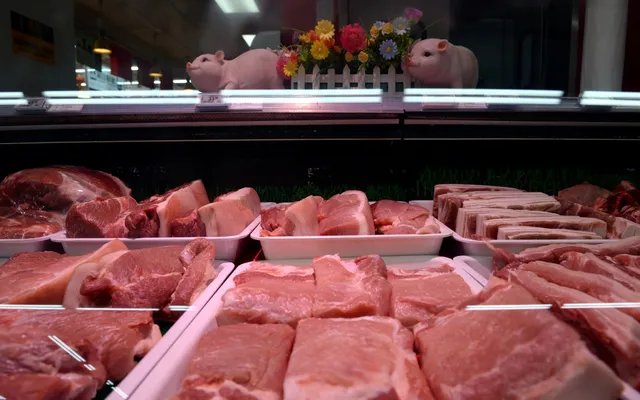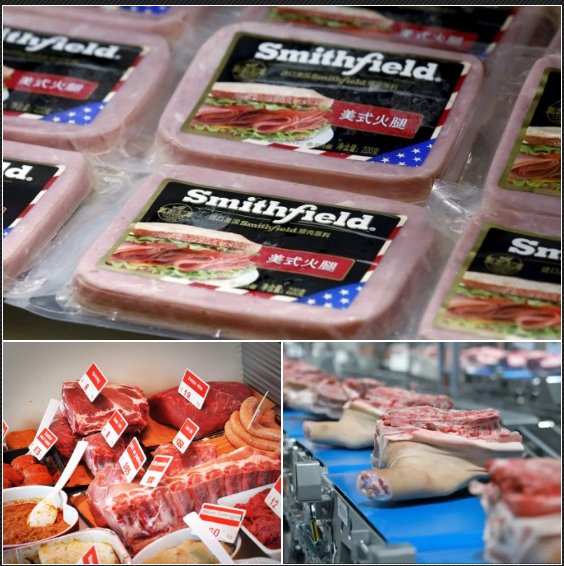In a surprising move, China has announced the re-importation of several types of U.S. pork and poultry. This development has caught many by surprise, considering the ongoing trade tensions between the two countries and the historical challenges in their trade relations. The decision raises several questions: Why is China lifting its restrictions on U.S. pork and poultry? What does this mean for the global agricultural market? This article will explore the reasons behind China’s decision, the potential consequences for both countries, and the broader impact on the global market.
## **Understanding the Background: U.S.-China Trade Relations**

For years, trade between the U.S. and China has been marked by ups and downs, largely influenced by political tensions and economic strategies. In the past, China had placed heavy tariffs and restrictions on U.S. agricultural products, including pork and poultry, as part of its trade war strategy. The U.S. had retaliated with tariffs on Chinese goods, creating a ripple effect across industries.
However, in recent months, both nations have made moves toward de-escalating tensions, even as the broader geopolitical landscape remains complicated. One of the key developments in this ongoing diplomatic shift is China’s decision to re-import U.S. pork and poultry, a decision that could signal a broader shift in the trade landscape.
### **Historical Context of U.S. Pork and Poultry Exports to China**
China is one of the largest importers of agricultural products in the world, and pork is a particularly crucial commodity due to its importance in Chinese cuisine. Before the trade tensions escalated, the U.S. was one of China’s primary suppliers of pork and poultry. However, during the trade war, China imposed tariffs and sanitary restrictions on these U.S. products, aiming to protect its domestic agriculture and increase the competitiveness of local producers.
In 2018, China imposed tariffs on U.S. pork and poultry as part of retaliatory measures against the Trump administration’s tariffs on Chinese goods. This move disrupted the flow of these commodities into the Chinese market, causing U.S. producers to search for new markets for their goods. However, the situation is changing, and China’s decision to re-import U.S. pork and poultry has opened the door for renewed trade relations in this critical sector.
## **Why Is China Re-Importing U.S. Pork and Poultry?**

Several factors have influenced China’s decision to lift its ban and re-import U.S. pork and poultry. Let’s explore the key reasons behind this sudden change in policy.
### **1. Domestic Supply Issues in China**
One of the primary reasons behind China’s decision to lift the restrictions on U.S. pork and poultry is the ongoing supply challenges within the country. China has faced severe disruptions in its domestic pork industry, particularly due to the African Swine Fever (ASF) outbreak that decimated the country’s pig population in recent years. ASF wiped out millions of pigs, causing a major shortage in pork supply and sending prices soaring. To fill this gap, China has had to rely on imports, including pork from the U.S.
As for poultry, China’s domestic production is often insufficient to meet the growing demand for chicken products. The U.S., with its large-scale poultry production, is a natural supplier for China. By re-importing U.S. pork and poultry, China can stabilize its market and prevent prices from rising further, offering consumers a more affordable and reliable source of protein.
### **2. Improving Trade Relations with the U.S.**
Another significant factor behind China’s decision is the ongoing thaw in trade relations with the United States. Under the Biden administration, the U.S. has signaled a willingness to engage in trade talks and cooperation with China, including in the agricultural sector. The easing of restrictions on U.S. pork and poultry imports is seen as a step toward restoring diplomatic and economic ties between the two nations.
In addition, the U.S. has expressed its interest in opening up more agricultural markets in China, which would benefit American farmers and producers. For China, re-opening its market to U.S. agricultural products could be a strategic move to strengthen trade relations and improve bilateral ties.
### **3. Global Supply Chain Adjustments Post-COVID-19**
The COVID-19 pandemic caused significant disruptions to global supply chains, including the food and agricultural industries. With travel restrictions, labor shortages, and logistical bottlenecks affecting production and distribution, many countries, including China, have faced difficulties in securing essential food products. The re-importation of U.S. pork and poultry is part of China’s broader strategy to diversify its supply sources and reduce reliance on other nations for food imports.
By importing U.S. agricultural products, China can ensure that it has access to a steady supply of pork and poultry, which is critical for its large population. This move reflects a global trend where countries are seeking to secure stable and diversified food sources to mitigate the risks posed by pandemics, climate change, and political instability.
### **4. Market Opportunities for U.S. Producers**

The re-importation of U.S. pork and poultry is also driven by market opportunities for American producers. The U.S. agricultural industry, particularly pork and poultry farmers, has faced challenges due to trade restrictions and reduced export markets. By re-opening the Chinese market, U.S. farmers stand to benefit significantly, with increased demand for their products.
For the U.S., China represents one of the largest and most lucrative markets for agricultural exports. This decision opens up new opportunities for U.S. farmers and producers to increase their sales, stabilize their industries, and support domestic jobs.
## **What Does This Mean for the Global Market?**
China’s decision to re-import U.S. pork and poultry is more than just a bilateral issue—it has wide-reaching implications for the global agricultural market. Here are some of the key effects this move will likely have.
### **1. Impact on Global Trade Flows**
The re-importation of U.S. pork and poultry by China could have a ripple effect on global trade flows. As one of the world’s largest consumers of pork and poultry, China’s demand for these products will influence prices and trade patterns in other regions. Countries that were previously competing for market share in China, such as the European Union, Brazil, and Canada, may face increased competition as U.S. products flood back into the market.
This could lead to changes in global supply chains, as other countries adjust to the renewed U.S. presence in the Chinese market. It may also lead to more competitive pricing for pork and poultry products globally, benefiting consumers in both China and other markets.
### **2. Increased Competition in the U.S. Agricultural Sector**
For U.S. farmers, re-opening the Chinese market represents a significant opportunity, but it also brings increased competition within the U.S. agricultural sector. As more pork and poultry products are exported to China, domestic U.S. prices may fluctuate depending on the level of demand. This could lead to shifts in the pricing of pork and poultry products within the U.S. market, potentially affecting consumers and producers.
While the return of China as a major market for U.S. agricultural products is beneficial overall, U.S. producers will need to balance the export opportunities with domestic market conditions.
### **3. Geopolitical Implications**
The re-importation of U.S. pork and poultry is part of a broader geopolitical shift. With both countries working toward improving their economic ties, this move signals the possibility of further trade liberalization between the U.S. and China. The decision could set the stage for more cooperative efforts in other industries, such as technology, energy, and manufacturing.
For other countries, particularly those involved in the agricultural sector, China’s renewed openness to U.S. products may encourage them to pursue similar negotiations with China. This could lead to a more interconnected global agricultural market, with more countries gaining access to China’s vast consumer base.
### **4. Stabilization of Prices for Consumers**

One of the immediate benefits of this decision is the potential for price stabilization in China’s pork and poultry markets. With domestic production struggling to meet demand, China’s re-importation of U.S. products will help ensure that consumers have access to a consistent and affordable supply of meat. This is crucial for a country with a population of over 1.4 billion people, where pork is a staple food.
The stability in prices could also benefit international consumers, as global supply chains are impacted by the availability of U.S. pork and poultry in the Chinese market.
## **Conclusion**
China’s decision to re-import U.S. pork and poultry is a significant development that has implications far beyond the U.S.-China relationship. It reflects the evolving trade dynamics between the two countries and highlights China’s desire to address domestic supply issues while fostering improved relations with the U.S. For U.S. producers, this move presents a valuable opportunity to tap into one of the world’s largest markets, while global markets will likely experience shifts in trade flows and pricing.
The decision also signals a broader trend of countries diversifying their food import sources to secure stable and resilient supply chains. As the global agricultural market continues to evolve, China’s actions may inspire other countries to reconsider their trade policies, potentially leading to a more interconnected and competitive global food system. As such, this move by China could be seen as the first step toward greater economic cooperation and a more stable agricultural future for the world.
